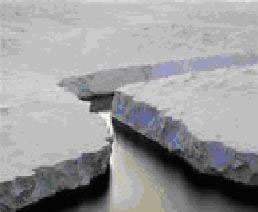Annual climate summary 2023
The report discusses the climate condition over Indian region during the year 2023. Notably, global temperatures soared to exceptionally high levels during this period (WMO.No.1347). The India Meteorological
The report discusses the climate condition over Indian region during the year 2023. Notably, global temperatures soared to exceptionally high levels during this period (WMO.No.1347). The India Meteorological
At least 120 residents at Mugapatan of Kalikot district has been displaced by the landslip on Wednesday morning. Some 20 people were displaced after the landslip swept away their residents and rest others were displaced due to the danger of the landslip. Those displaced have been settled in the families of the armies. The landslide which occurred due to the incessant rainfall has also blocked the road which joins the district headquarters. Meanwhile, the Araniko Highway which was blocked from Tuesday due to the landslip has not resumed yet.
Surinder Sud / New Delhi August 22, 2008, 4:49 IST Monsoon took a long break in July in the interior peninsula, Maharashtra and parts of Gujarat and Rajasthan, Yet, the overall distribution of rains till mid-August has been the best in the past five years.
: NWFP Chief Minister Ameer Haider Khan Hoti on Wednesday declared those localities as calamity-hit areas, which had been badly affected due to torrential rains and floods on Aug 4. The areas include the Dirdawar circle of Mathra and 22 Patwar circles of Khalisa. These areas will be exempted from paying water tax, land revenue, agriculture income tax etc for one year from June 30, says a handout. According to details, 12,934 acres of land and standing crops over 9,939 acres had been destroyed.
The jute growers in Narsingdi are facing problem in rotting their harvested jute plants due to lack of sufficient water in canals, ponds and ditches. Rotting of jute plants need at least three-foot depth of water but the local water sources such as canals, ponds and ditches lack the required amount of water, local farmers said. Absence of sufficient water in the canals and ditches are seriously hampering rotting of jute plants in different areas of the district this year, they said.
Saudi Arabia has no permanent rivers or lakes. Rainfall is low and unreliable. Cereals can be cultivated only through expensive projects that deplete underground reservoirs. Dairy cattle must be cooled with fans and machines that spray them with water mists. This is not, in short, a nation that would normally be associated with large-scale agriculture.
Landslide and flood triggered by incessant rainfall for a week killed at least three persons and five others are feared dead here in the district on Monday. Local Lalu Prasad Acharya, Bhakti Prasad Acharya, Maniram Acharya were buried as a landslide swept away nine houses at Dahachaur of Sukatiya-8 at around 4 am on Monday. They are feared dead. Kamal Bahadur Magar and Dan Bahadur Baral of Kashikandh-7 of Dailekh district, who had been staying at Maniram's hotel were also swept away by the landslide.
Seven persons have died so far in mudslides that hit Kalikot and Pyuthan districts on Saturday. Five members of a family lost their lives in a mudslide in Bharta VDC of Kalikot district. Among them, two seriously injured succumbed to injuries while being rushed to the hospital. Pabindra Shahi, 7, the lone survivor from the calamity, is undergoing treatment at the District Hospital, Pabindra's father Gorakh Bahadur Shahi had gone to perform shamanistic rituals in a neighboring village when the tragedy struck his family. He lost his wife and four sons in the disaster.

A new study based on four years of collecting ice core data says human activity and the El Nino weather pattern over the last century have warmed West Antarctica, part of the world's coldest continent. Major El Nino event from 1939 to 1942 and greenhouse emissions from cars and factories responsible for the West Antarctic warmeing. The study is carried out by scientists David Schneider and Eric J. Steig of the National Center for Atmospheric Research and published in the journal Proceedings of the National Academy of Sciences, August 12, 2008 doi:10.1073/pnas.0803627105.
Scientists studying variations in tropical heat and rainfall since the mid-1980s have found a strong link between warm periods and more extreme downpours. The observed rise in the heaviest rains is about twice that produced by computer simulations used to assess human-caused global warming, said the researchers. Other studies have already measured a rise in heavy rains in areas as varied as North America and India, and climatologists have long forecast more heavy rains in a world warmed by accumulating greenhouse gases.
Scientists studying variations in tropical heat and rainfall since the mid-1980s have found a strong link between warm periods and a rise in the frequency of the most extreme downpours. The observed rise in the heaviest tropical rains is about twice that produced by computer simulations used to assess how human-caused global warming could change rainfall, said the researchers.